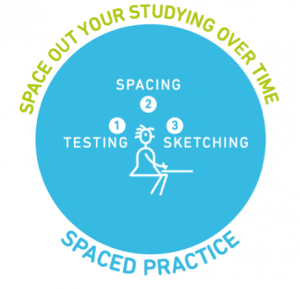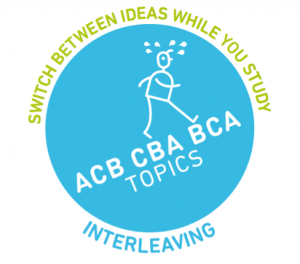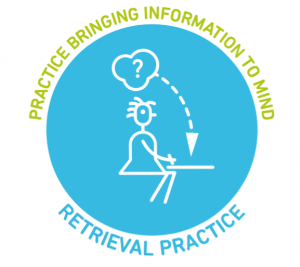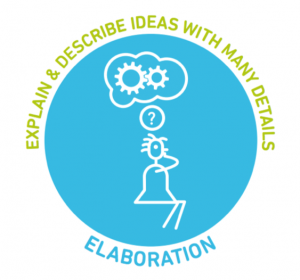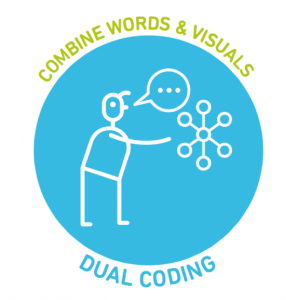I recently spoke at a training session for new anthropology teaching assistants (TAs).
With courses of over 300 or 400 students, graduate student TAs are essential to teaching and learning here at UCI. But TAs face a number of challenges. Many incoming grad students are new to teaching and some have, in the space of just three months, moved from being undergraduates themselves to being expected to teach undergraduates. TAs are responsible for leading discussion sections and grading student work, but they don’t have a lot of control over class topics or the assignments they grade. And many TAs, especially those who went to small undergraduate schools or who studied outside of the United States, haven’t experienced a discussion section before and don’t know what to expect.
TAs must also meet two often competing sets of demands—those of the students in their discussion sections and those of the professor teaching the course. Faculty often want discussion sections to delve into material, especially assigned readings, in more depth than we can cover in lecture sessions and to assist undergraduates in developing their analytical and critical thinking skills. But many undergraduates are more pragmatic and mainly want discussion sections that will help them perform better on assignments and exams.
In my presentation, I wanted to offer new TAs suggestions for discussion section activities that can help achieve all of these goals.
These suggestions are organized around work by The Learning Scientists (otherwise known as Megan A. Smith, Yana Weinstein, and Cindy Wooldridge), who identify six main strategies that support meaningful learning: spaced practice, interleaving, retrieval practice, elaboration, concrete examples, and dual coding.
The first two strategies, spaced practice and interleaving, are ones that discussion sections often routinely support.
Spaced practice is, essentially, the opposite of cramming. By encountering course material in assigned readings, then in lecture sessions, and again in a different way in discussion sections, students are spacing out their learning. Encouraging students to review information from class regularly and begin studying for exams early can continue to support this practice.
Interleaving refers to switching between ideas while studying. Focusing on only one topic for an extended period of time is not always conducive to learning. Most discussion sections don’t immediately follow the lecture, so students have focused on learning for other classes in the meantime and are now coming back to the material in your class. You can incorporate interleaving in a discussion section by presenting ideas in a different order each time you discuss them.
Retrieval refers to the process of bringing information to mind. In many introductory classes, students are learning a large number of new terms, and practicing retrieval in discussion sections can help them become comfortable with this vocabulary.
To practice retrieval, ask students to:
- Identify key words from readings and lectures, and practice recall with low-stakes quizzes or games. For example, students might make crossword puzzles and then exchange and complete them in class. (Here are some examples I made for a biological anthropology class to review the history of evolutionary thought and basic skeletal anatomy.) Or you could use Kahoot, a free platform that allows you to create games based on multiple-choice questions. Heads Up is a collaborative flash-card style game that Ellen DeGeneres uses on her talk show and that can be adapted to classroom settings. (There is an app, but students can easily use paper or index cards instead.)
- Write their own exam questions (alone or in teams) and trade with each other to answer them. For example, Joe Dumit sometimes divides his class into guilds and has them compete by answering each others’ questions. His only rule is that the questions have to be ones that students wouldn’t be mad at a professor for writing (i.e., nothing too tricky or picayune). Student-developed questions do not necessarily have to be focused on vocabulary; developing questions based on the arguments in course readings can encourage higher order thinking.
Elaboration encourages students to move beyond the memorization of definitions and to understand concepts in more depth.
To encourage elaboration, ask students to:
- Describe how two concepts are similar and different. For example, even though students in my medical anthropology course can usually repeat definitions of the terms “medicalization” and “disorderization,” this type of exercise helps them understand the relationship between the concepts more clearly.
- “Unpack” a concept. For example, rather than defining what medicalization is, ask how it happens. Why? Who might benefit from certain forms of medicalization and in what ways? What are some repercussions of medicalization? How might these differ in various contexts?
- Write a poem. Kristina Killgrove has students in her human osteology class write a haiku about the hyoid. Of course, seventeen syllables is not enough to thoroughly describe a bone, but to write the poem, students need to first think about everything they know about the hyoid, and they will practice elaboration in process. At the start of a class about uses of the culture concept in and out of anthropology, I asked students to write an acrostic poem using the word “culture.” Their poems both allowed me to see how they were thinking about the concept and gave them a chance to reflect on a term they often take for granted. Next time I teach the class, I’ll have them repeat the exercise in our final week.
Concrete examples help to clarify abstract ideas.
Ask students to:
- Identify concrete examples of confusing concepts from lectures and readings or come up with a new example to illustrate a concept. It is often helpful to have students work together in groups to brainstorm these examples and describe how they relate to the broader concept.
- Use examples to illustrate a concept for a variety of audiences. For example, how would you explain this concept to a fellow student who has never taken anthropology before? How would you explain this to a ten-year-old? How would you explain this in a Buzzfeed post (see, for example, “Post-structuralism explained with hipster beards“)? Similarly, I have students in my “Race, Gender, and Science” course collect and write blog posts about popular culture images that illustrate topics addressed in class. Although this is a larger course assignment, the search for specific contemporary examples could be adapted to an in-class activity.
Finally, dual coding refers to the combination of written and visual material.
You might incorporate this learning strategy by asking students to:
- Draw an argument map for an assigned reading.
- Create a timeline. For example, Caitlin Fouratt (a former graduate student at UCI who is now at Cal State Long Beach) asked students in her Transnational Migration course to create electronic timelines (see samples here). Again, while this project was a major course assignment, smaller versions of it could be accomplished together in a discussion section.
- Reflect on and/or discuss a video clip. I often use this technique in my large lecture classes by asking students to respond to a video clip with a think-pair-share activity or minute paper.
- Sketch an object or build a model. These sketches and models can be especially helpful in biological anthropology or archaeology classes.
See The Learning Scientists for additional resources about learning strategies. Addressing some of these strategies in your class activities can help make your discussion section an effective way to support for student learning.
Image credits: Yana Weinstein, Megan Smith, & Oliver Caviglioli
